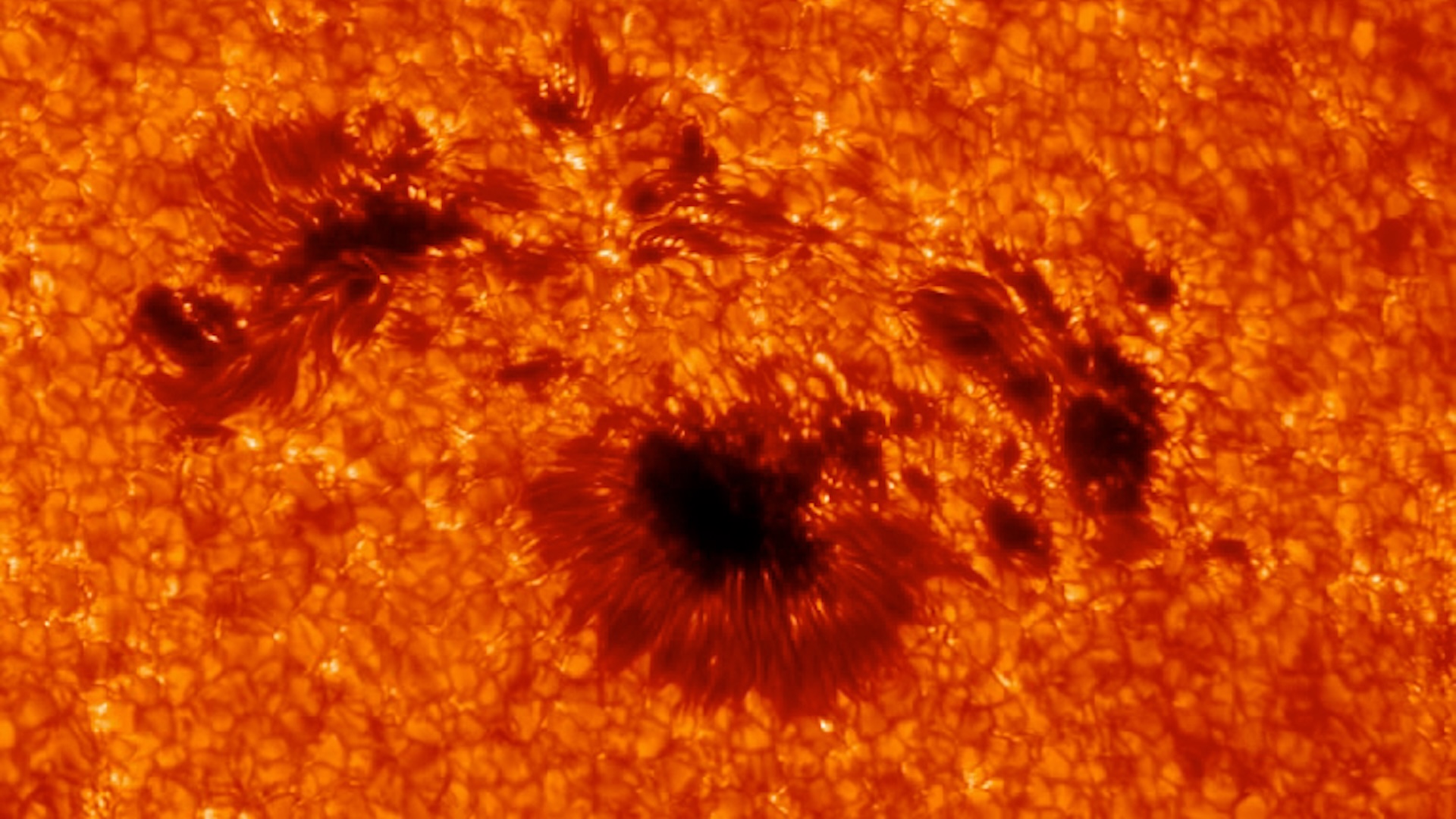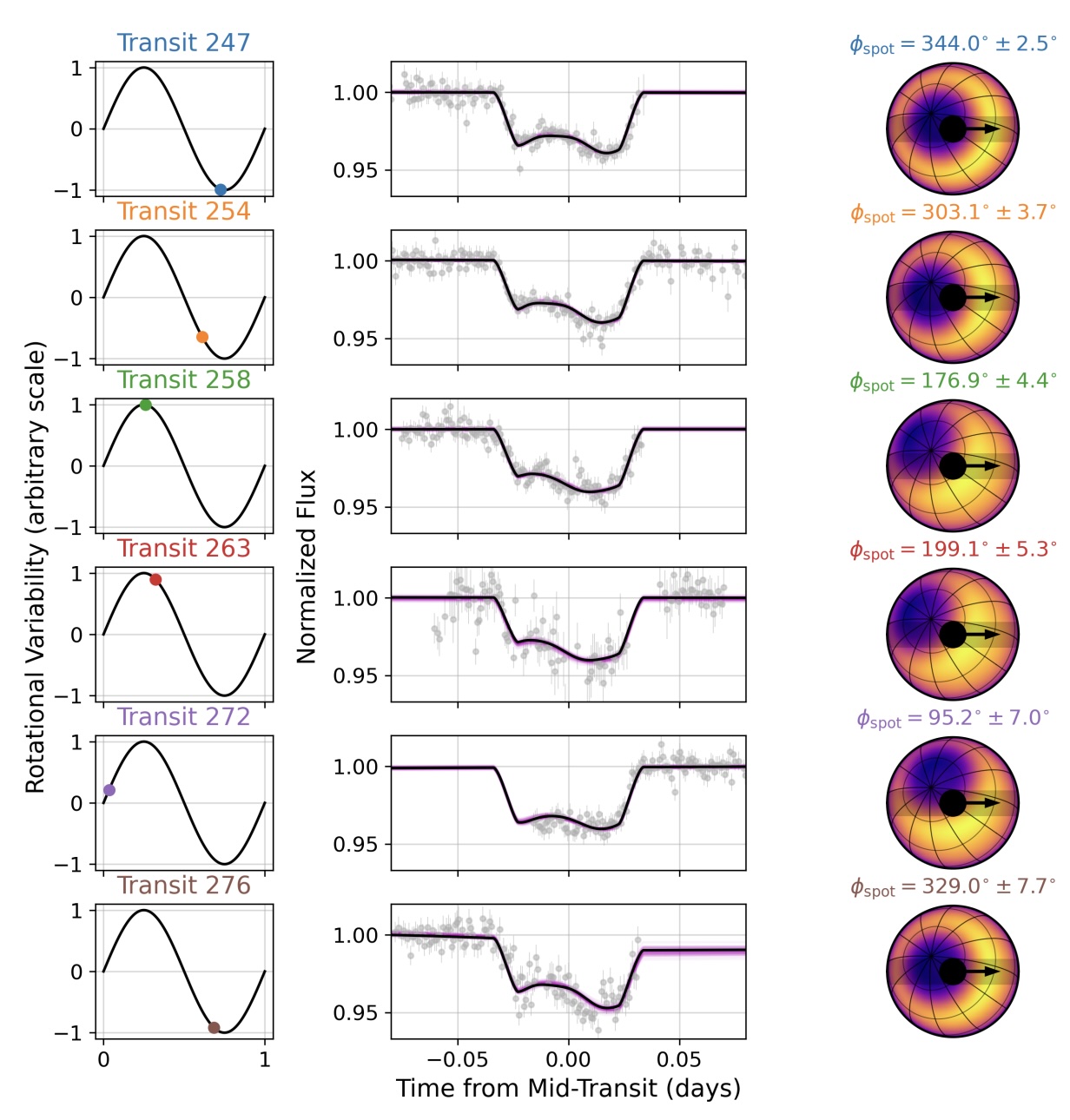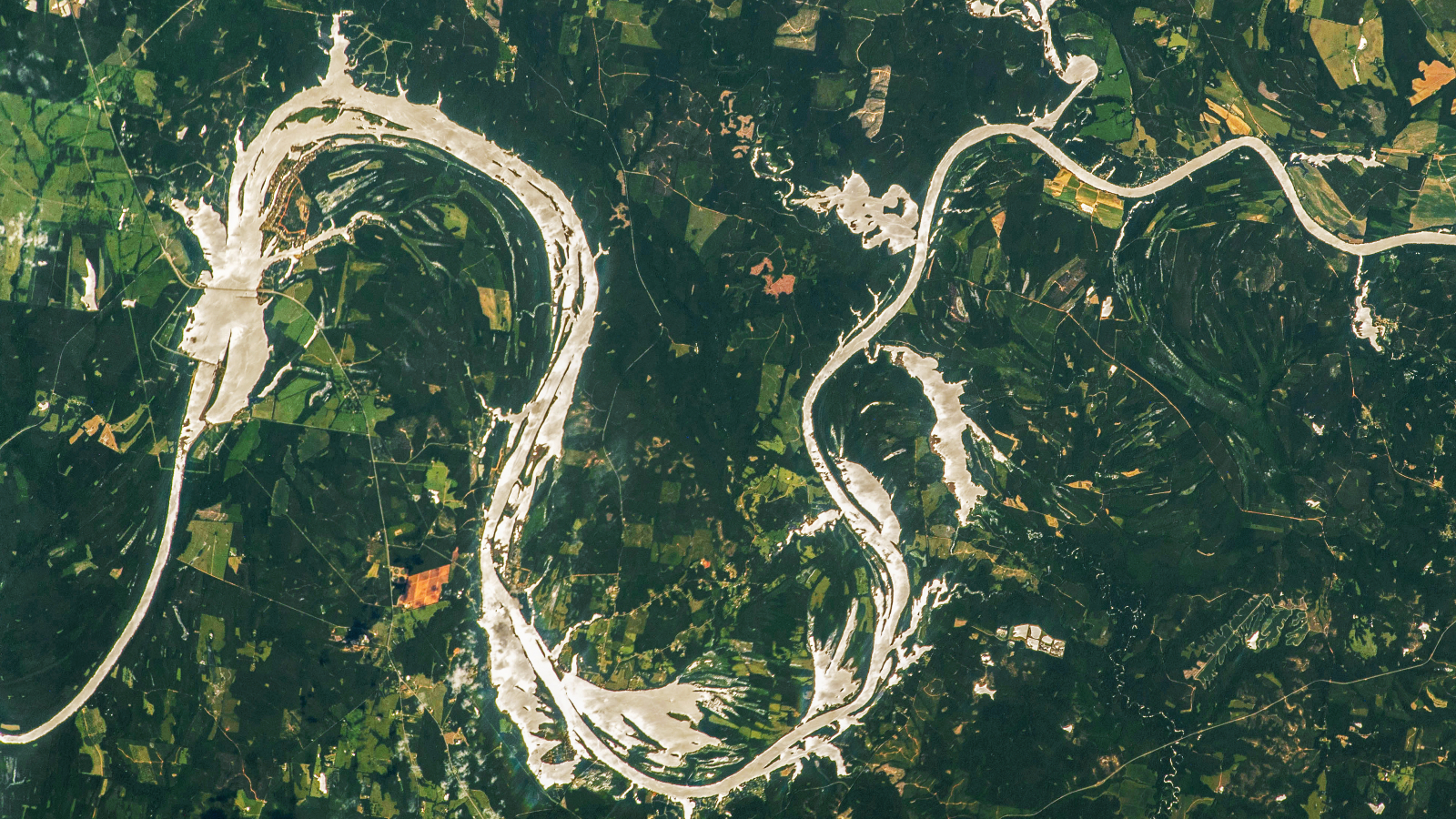Scientists detect gargantuan 'pimple' that has plagued a star for at least 7 years
A transiting exoplanet has revealed a huge "spot" near the pole of its tiny M-dwarf parent star. The spot has been around at least 7 years and occupies 7% of the sun's surface.

Most exoplanets are discovered as they transit, or move across, their parent stars. But a new study details the opposite scenario: As a giant planet crossed its host star, peculiarities in its transit signature revealed a new discovery about the star itself — in particular, a spot that occupies an enormous 7% of the star's surface and has lasted at least seven years.
Nearly 6,000 exoplanets — planets beyond our solar system — have been confirmed to date. While many methods have helped amass this trove, the most successful has been the transit method. This technique, which has helped to reveal nearly 75% of known exoplanets, measures the transient, tiny decrease in a star's brightness when an orbiting planet passes along the line of sight between the star and an observing telescope.
Most transit signatures in a star's light curve are similar, comprising a single-step drop. But the planet described in the new study is unusual. Known as TOI-3884 b, it is a Neptune-like world 33 times the mass of Earth. When transiting its star — the tiny M-dwarf star TOI-3884 — the planet creates a two-bump drop in the star's light curve.
First recorded by NASA's Transiting Exoplanet Survey Satellite (TESS), these asymmetrical transits piqued astronomers' curiosity. In a 2022 study, they reasoned that the strange transits meant the star's surface wasn't uniformly bright, with the fainter patch possibly being a starspot. (Starspots — like sunspots, but on stars other than the sun — are bunches of tangled magnetic-field lines that are dimmer than the surrounding photosphere.)
To determine features of this starspot, the new study’s authors — astrophysicists from Harvard University and MIT — drew on both the TESS observations along with a computational model of TOI-3884 (starspot included) and its planet. Their analysis revealed that the spot, with a radius of 76,000 miles (122,000 kilometers), occupies "about 7% of the surface area of the star," Patrick Tamburo, a postdoctoral researcher at Harvard University and the new study's first author, told Live Science by email. In contrast, the largest recorded sunspots, measuring 99,000 miles (160,000 km) across, cover a mere 0.3% of Earth's sun.
Related: Bottom of the sun becomes visible to humans for the first time in history (photos)
TOI-3884's starspot also differs from sunspots in its lifespan. "On the Sun, the longest-lived spots last for a few months," Tamburo said. But using observational data collected by the Zwicky Transient Facility in California in previous years, the researchers showed that TOI-3884's "pimple" has been around for at least seven years. Tamburo noted that this isn't surprising, however, as polar spots on rapidly rotating stars have been known to last for decades.
Get the world’s most fascinating discoveries delivered straight to your inbox.

But how could a starspot cause such a peculiar pattern? The 2022 study proposed two possibilities. One is that TOI-3884’s day — the time the star takes to rotate around its axis — is equal to (or a multiple of) the time TOI-3884 b takes to orbit the star once. The second possibility is that the planet orbits over one of the star's poles, which hosts a large, long-lasting, starspot that is slightly off-center.
Such spots "have been observed on many different types of stars," including M dwarfs like TOI-3884, Tamburo said. This latter scenario also suggested the planet's orbit was highly tilted — perhaps even perpendicular — compared to the star's equator. (In contrast, all of the solar system's planets have orbits inclined by less than 10 degrees.)
To investigate the first scenario, the researchers estimated TOI-3884's rotational period. Using observations of TOI-3884 taken from the Arizona-based Tierras Observatory in 2024 and 2025, the researchers discovered that the planet rotated once every 11 days.
The data also showed that TOI-3884 b transited every 4.5 days, suggesting that this was the planet's orbital period. This meant the ratio of the planet's orbital period to the star's rotational period wasn't a whole number, ruling out the first hypothesis.
To test the second hypothesis, the researchers relied on their computational model, searching for values for various parameters that would best explain the observations. The best-fitting explanation, they found, is that TOI-3884 b orbits along a near-perpendicular path around its star, whose spot lies at a latitude of 80 degrees. The modeling also implied that the starspot likely pirouetted around the star's pole, making it partly or fully visible to Earth-based viewers, which would explain the slight variations in TOI 3884-b's transits.
As for TOI-3884 b's perpendicular path, Tamburo said that either another planet or a star shoved it from its original orbit, or the disk of material from which TOI-3884 b was born was itself tilted relative to the star.
The study, which hasn't yet been peer-reviewed, is available as a preprint on the arXiv server.

Deepa Jain is a freelance science writer from Bengaluru, India. Her educational background consists of a master's degree in biology from the Indian Institute of Science, Bengaluru, and an almost-completed bachelor's degree in archaeology from the University of Leicester, UK. She enjoys writing about astronomy, the natural world and archaeology.
You must confirm your public display name before commenting
Please logout and then login again, you will then be prompted to enter your display name.


